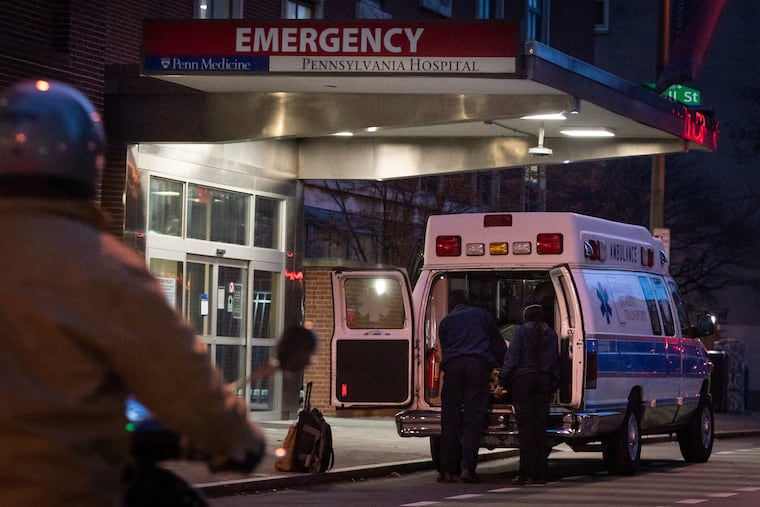Why Pennsylvania paramedics say ‘EMS is dying’
The state budget includes a $20.7 million increase to ambulance reimbursement rates, but EMS agencies say much more is needed.

HARRISBURG — Emergency medical services are the only first responders that most Pennsylvanians don’t pay toward until they call 911.
And EMS agencies are warning that they might not be there when they’re needed if they don’t see substantial funding increases.
For years, EMS agencies have been generating less revenue than they need to operate each year. Unlike other first responders, they rely entirely on ambulance reimbursements, philanthropy, and other creative ways to raise money.
“EMS is dying,” said Heather Sharar, the executive director of the Ambulance Association of Pennsylvania, which represents 220 EMS agencies. “How long can you exist if no one is paying you the cost for your service?”
The funding shortfall has led a number of EMS agencies to close, with three in Pennsylvania closing in the last three months — leaving a ripple effect that will require other agencies in the region to pick up the need.
“We take for granted that there’s always going to be an ambulance to respond if we dial 911,” said Shane Wheeler, the CEO of VMSC Emergency Medical Services, which provides emergency care to the greater North Penn area of Montgomery County. “Increasingly, we’re finding that that might not be the case.”
» READ MORE: These backroom deals helped Gov. Josh Shapiro complete the Pa. state budget
The state Senate is expected to unveil Wednesday a plan to implement a $20.7 million increase to ambulance reimbursement rates. These funds — and a number of other new initiatives — were included in the $45.5 billion state budget signed earlier this month, but require further legislative action for the state to actually spend the money.
Eight municipal governments, including Philadelphia, pay toward their emergency medical services through their fire department. Last year, the Philadelphia Fire Department responded to 251,501 EMS incidents, according to a 2022 city report.
However, Philadelphia also relies on some independent EMS agencies to respond to emergency calls. These agencies don’t receive funding from the city and mostly rely on ambulance billing, Sharar said.
Both Wheeler and Sharar said they appreciated the state’s expected funding increase this year, but much more is needed. For Wheeler’s EMS agency, a statewide $20.7 million funding would only increase its annual revenue by nearly $45,000.
“It’s going to take a lot of $20 million initiatives to get EMS on a good, stable platform,” Wheeler added.
Any delay to these funds hurts EMS agencies, Sharar said. The increased ambulance reimbursement rates won’t get disbursed until both the Senate and House approve them. The state House isn’t scheduled to return to session until the end of September, following a special election for a safe Democratic seat that is all but sure to return House Democrats to their numeric majority of 102-101. Until then, the chamber is tied 101-101, and House lawmakers are unlikely to return until after that election.
VMSC Emergency Medical Services has turned to each of the seven municipalities in Montgomery County, including Hatfield Township and Lansdale, to request they each pay toward their usage of EMS services. Their annual request totals approximately $1 million, calculated on the number of calls in that area that they responded to.
Wheeler said the North Penn region is better off than some Pennsylvania communities. With only about 10% of its population on Medicaid, most people have private health insurance.
”And we still have a 14% gap between revenue and expenses,” Wheeler said.
» READ MORE: All Pa. public school students will get free breakfast, but some districts struggle with low participation
Ambulance services don’t receive increased payment for providing higher-quality care either, Wheeler noted. For example, his agency has tried to add ultrasound technology to their emergency vehicles in an effort to determine a person’s condition before they reach the hospital. There is no way for them to charge extra for the clinical enhancement, which could improve a patient’s outcome.
Ambulance rides are more than “just a ride,” Sharar said.
“You are receiving a mobile [emergency room],” she said. “It’s not just the gas for the ride to the hospital. It is care. It is medical monitoring, treatment, and observation. It is a lifesaving resource that unfortunately, nobody wants to pay for.”